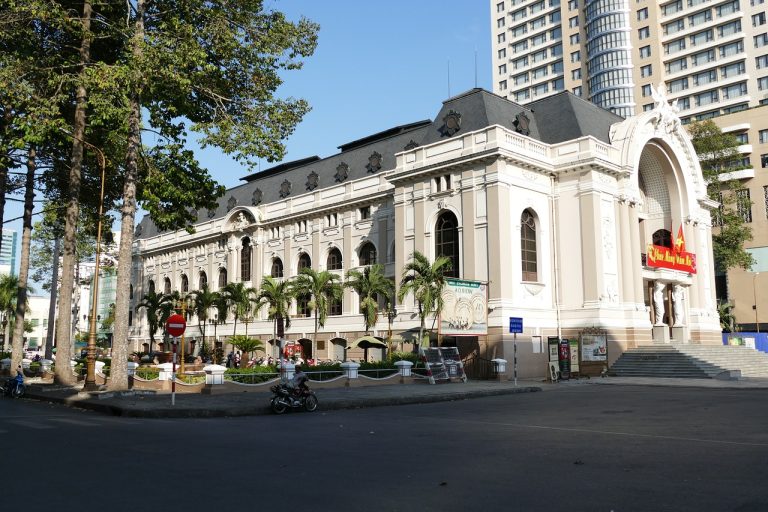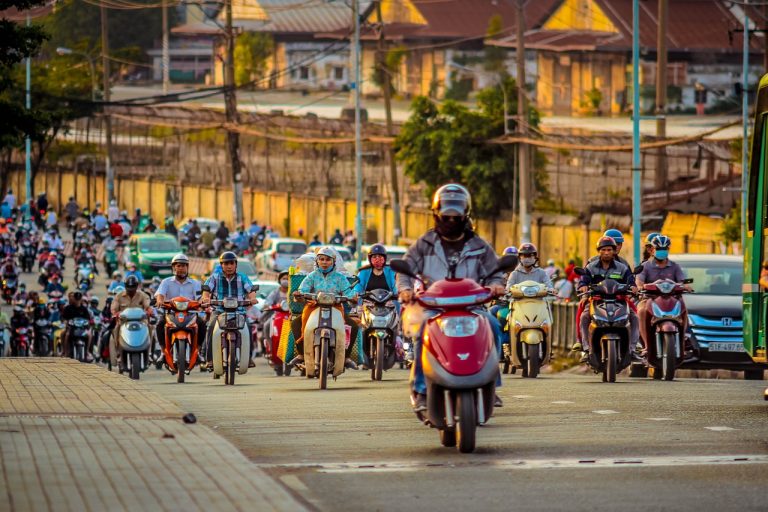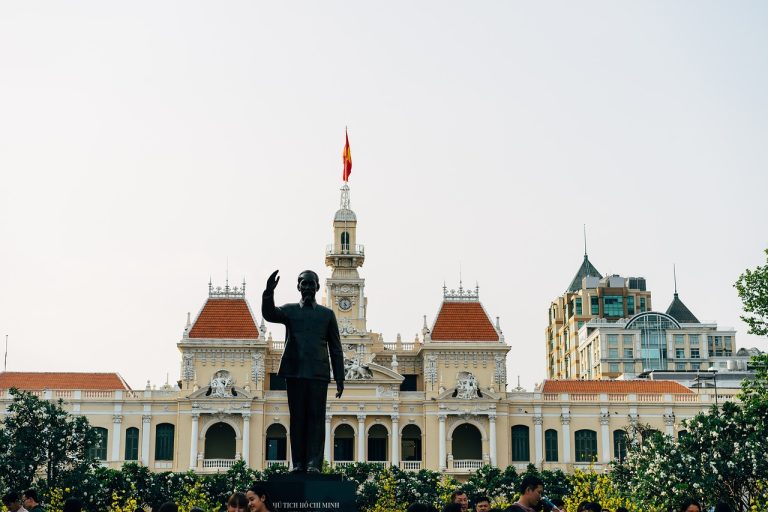Ho Chi Minh City Vietnam Video
Public Transportation in Ho Chi Minh City Vietnam: A Complete Guide
Ho Chi Minh City, formerly known as Saigon, is the largest city in Vietnam and a bustling metropolis with a population of over 8 million people. Navigating through the city can be a challenge, but with an extensive public transportation system, getting around Ho Chi Minh City is relatively easy. This guide will provide you with all the information you need to know about public transportation in Ho Chi Minh City, including the different modes of transport, ticketing options, and tips for a smooth journey.

1. Buses
Ho Chi Minh City has an extensive bus network that covers almost every corner of the city. Buses are a popular mode of transportation among locals and tourists alike. The buses are operated by several different companies, each with its own routes and schedules. Here are some key points about the bus system in Ho Chi Minh City:
- Frequency: Buses in Ho Chi Minh City run at regular intervals throughout the day, with peak hours being from 6 am to 9 am and 4 pm to 7 pm.
- Ticketing: Bus fares are affordable and typically range from 5,000 VND to 10,000 VND, depending on the distance traveled. Tickets can be purchased directly from the conductor on board.
- Routes: The bus routes are numbered, and each bus displays its route number on the front. It is recommended to carry a map or use a navigation app to ensure you are on the correct bus.
- Bus Stops: Bus stops in Ho Chi Minh City are marked with signs and are usually located at major intersections or landmarks. Look for the blue bus stop signs along the road.
- Peak Hours: During peak hours, buses can get crowded, so be prepared for standing room only. It is advisable to avoid traveling during these hours if possible.
2. Metro

Ho Chi Minh City is currently developing its metro system, which is expected to greatly improve the city’s public transportation network. The first line, Line 1, is under construction and is scheduled to be operational in the near future. Here are some key points about the metro system in Ho Chi Minh City:
- Line 1: Line 1 of the metro will connect Ben Thanh Market in District 1 to Suoi Tien Park in District 9. It will have a total length of approximately 20 kilometers and will feature both underground and elevated sections.
- Stations: Line 1 will have a total of 14 stations, including major interchanges with other modes of transport such as buses and taxis.
- Ticketing: The metro system will have its own ticketing system, and passengers will need to purchase a separate ticket to use the metro.
- Frequency: The frequency of metro trains is expected to be high, with trains running at intervals of 5 to 10 minutes during peak hours.
- Accessibility: The metro system is designed to be accessible for people with disabilities, with facilities such as elevators and ramps at stations.
3. Taxis
Taxis are a convenient mode of transportation in Ho Chi Minh City, especially for travelers who prefer a more comfortable and private journey. Here are some key points about taxis in Ho Chi Minh City:
- Companies: There are several taxi companies operating in Ho Chi Minh City, including Mai Linh, Vinasun, and Grab.
- Fares: Taxi fares in Ho Chi Minh City are metered, and rates vary depending on the distance traveled and the time of day. It is advisable to check the meter before starting your journey.
- Hailing a Taxi: Taxis can be easily hailed on the street, or you can use ride-hailing apps like Grab to book a taxi in advance.
- Language Barrier: Some taxi drivers in Ho Chi Minh City may not speak English fluently, so it is helpful to have your destination written down or use a translation app.
- Motorbike Taxis: Motorbike taxis, known as “xe om,” are also available in Ho Chi Minh City. They are a popular choice for short distances and can be recognized by their green jackets.
4. Cyclos
Cyclos are a unique mode of transportation in Ho Chi Minh City and offer a different way to explore the city. Here are some key points about cyclos:
- Overview: Cyclos are three-wheeled bicycles with a seat at the front for passengers. They are typically operated by drivers who pedal the cyclo.
- Tourist Attractions: Cyclos are often used for short sightseeing trips around popular tourist areas, such as Ben Thanh Market and the Notre Dame Cathedral.
- Negotiating Price: The fare for a cyclo ride is usually negotiable, so it is important to agree on a price before starting your journey.
- Comfort: Cyclos provide a leisurely and open-air experience, allowing you to enjoy the sights and sounds of the city.
- Availability: Cyclos can be found near major tourist attractions and in the city center. Look for cyclo drivers wearing distinctive uniforms.

5. Motorbikes
Motorbikes are a popular mode of transportation in Ho Chi Minh City, and they offer a quick and convenient way to navigate through the city’s busy streets. Here are some key points about motorbikes in Ho Chi Minh City:
- Renting Motorbikes: Motorbikes can be rented from various rental shops in Ho Chi Minh City. It is important to have a valid license and wear a helmet while riding.
- Traffic Conditions: Ho Chi Minh City has a reputation for its chaotic traffic, so it is important to exercise caution and be aware of your surroundings while riding a motorbike.
- Parking: There are designated parking areas for motorbikes throughout the city. Look for signs indicating parking spaces and always lock your motorbike.
- GrabBike: GrabBike is a popular ride-hailing service in Ho Chi Minh City that allows you to book a motorbike taxi through a mobile app.
- Helmet Laws: It is mandatory to wear a helmet while riding a motorbike in Ho Chi Minh City, both for the driver and the passenger.
6. Ferries
Ho Chi Minh City is located on the banks of the Saigon River, and ferries are a popular mode of transportation for crossing the river. Here are some key points about ferries in Ho Chi Minh City:
- Routes: Ferries operate on various routes across the Saigon River, connecting different parts of the city.
- Types of Ferries: There are different types of ferries available, including passenger ferries and vehicle ferries.
- Ticketing: Ferry fares are usually affordable and can be purchased directly at the ferry terminal.
- Schedules: Ferry schedules may vary depending on the route and time of day, so it is advisable to check the timings in advance.
- Scenic Views: Taking a ferry across the Saigon River offers panoramic views of the city skyline and is a unique way to experience Ho Chi Minh City.
7. Trishaws
Trishaws, also known as “cyclos,” are a traditional mode of transportation in Ho Chi Minh City and are primarily used for short distances. Here are some key points about trishaws:
- Overview: Trishaws are similar to cyclos, with a seat at the front for passengers. They are usually pedaled by a driver.
- Short Distances: Trishaws are commonly used for short trips within a specific area, such as exploring a neighborhood or market.
- Price Negotiation: The fare for a trishaw ride is typically negotiable, so it is important to agree on a price before starting your journey.
- Local Experience: Riding a trishaw allows you to immerse yourself in the local culture and experience the city at a slower pace.
- Availability: Trishaws can be found in popular tourist areas, such as the Ben Thanh Market and the backpacker district of Pham Ngu Lao.
8. Walking
Walking is a great way to explore Ho Chi Minh City, especially in the city center where many attractions are within walking distance of each other. Here are some key points about walking in Ho Chi Minh City:
- Pedestrian-Friendly Areas: District 1, which is the city center, is pedestrian-friendly and has wide sidewalks for walking.
- Traffic Awareness: While walking, it is important to be aware of the traffic and cross the roads at designated pedestrian crossings.
- Exploring Neighborhoods: Walking allows you to discover hidden gems and explore the local neighborhoods at your own pace.
- Street Food: Walking around Ho Chi Minh City gives you the opportunity to try the delicious street food that the city is famous for.
- Weather Considerations: Ho Chi Minh City can get hot and humid, so it is advisable to wear comfortable clothing and carry water while walking.
9. Ride-Sharing Services
Ride-sharing services like Grab are popular in Ho Chi Minh City and provide a convenient and affordable way to get around the city. Here are some key points about ride-sharing services in Ho Chi Minh City:
- Booking: Ride-sharing services can be booked through a mobile app, and you can choose between different types of vehicles, including cars and motorbikes.
- Payment: Payments for ride-sharing services can be made through the app using cash or a linked credit/debit card.
- Availability: Ride-sharing services are available 24/7, making them a convenient option for late-night travel.
- English Language Support: Ride-sharing apps like Grab have English language support, making it easier for tourists to use the service.
- Estimated Fares: The app provides estimated fares before booking, allowing you to compare prices and choose the most suitable option.
10. Tips for Using Public Transportation
Here are some additional tips to enhance your experience when using public transportation in Ho Chi Minh City:
- Be Prepared: Plan your journey in advance, including the route you need to take and the mode of transport you will be using.
- Carry Small Change: It is advisable to carry small denominations of Vietnamese Dong for bus fares or when paying for taxis.
- Stay Alert: Keep an eye on your belongings and be aware of your surroundings, especially in crowded areas or on public transport.
- Ask for Help: If you are unsure about directions or need assistance, don’t hesitate to ask the locals or transport staff for help.
- Use Navigation Apps: Utilize navigation apps like Google Maps or local apps to help you navigate through the city and find the best public transportation routes.
Conclusion
Navigating through Ho Chi Minh City can be an adventure in itself, but with the city’s comprehensive public transportation system, exploring this vibrant city becomes much easier. Whether you choose to ride the buses, hop on a metro train, hail a taxi, or embrace the local culture with a cyclo ride, Ho Chi Minh City offers a range of options to suit every traveler’s needs. By following this complete guide to public transportation in Ho Chi Minh City, you will be well-equipped







